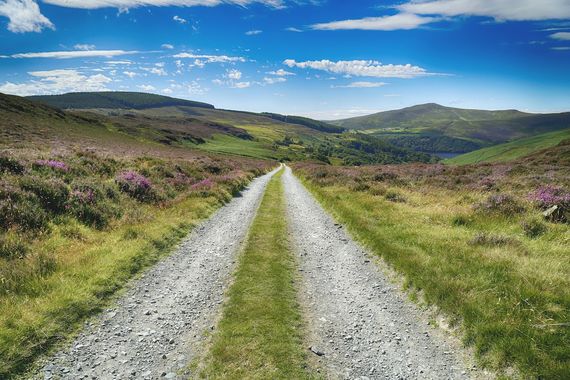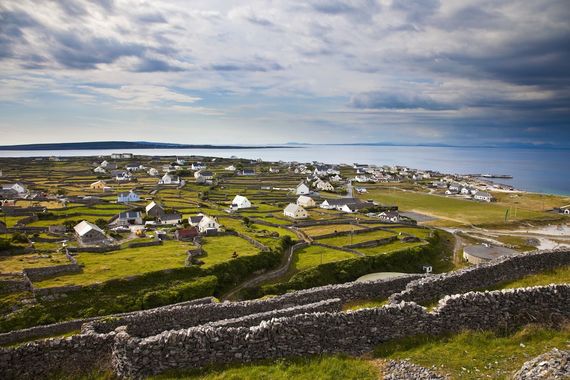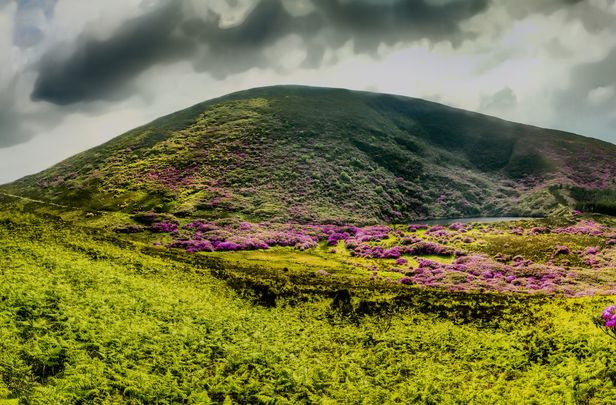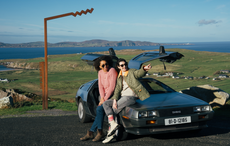Editor's note: In May 2022 our sister publication, Ireland of the Welcomes, celebrated its 70th anniversary. To mark the occasion, we dipped into our decades of archives and found incredible articles like this and others written by famous Irish figures such as Brendan Behan, Patrick Kavanagh, and Paul Henry.
Probably it is true of any European country, Ireland is the least photographed. How this has come about is something of a mystery, for it offers the camera article an unequaled variety of subjects and many that must rank at the peak of the world's finest photographic material.
Above all, there are two features that contribute to the enjoyment of the visiting photographer. First, Ireland remains one of the few unspoiled countries in Europe. Even its cities have a strangely detached atmosphere as if they lived in a world and an age of their own. Second, throughout much of the year and particularly during the months of April, May, and early June there is a clarity of atmosphere which enhances the ordinary and makes the beautiful enchanting.
In all parts, there are scenes to excite the heart of every true camera artist, whatever may be his specialty. Indeed, the danger is that he may linger too long near the point of his arrival, and miss the greater gems which await him further afield. So rich is this country in material that the serious pictorialist may become intoxicated by what he sees passing through the main thoroughfares, and overlook the treasures to be found on the lesser-known by-ways and tracks.
How wonderful is the infinite blending of sky and water, be it the Atlantic breakers casting their spray hundreds of feet into the air to be swept inland; the quiet waters of some small lake, blue as the sky above; or a dashing torrent cascading through the purple heather of a mountain glen! Woven through such unforgettable scenes are lofty peaks wild boglands and homely little valleys studded with color-washed cottages and farms. To make the picture complete there are the Irish people - gay, friendly people! Simply clad, with a touch of brighter homespun here and there, and an occasional shawl, they go quietly about their daily work. They are never too busy to greet the traveler or give him whatever assistance he may need.
It was no mere chance that let Robert Flaherty select the Aran Islands when he was seeking material for his film. Indeed, besides being the fried true "documentary", "Man of Aran" is acknowledged to be one of the greatest pictorial records of our time, and is a source of inspiration to each rising generation in the film world.

Heather in bloom at the Wicklow National Park.
Perhaps though, your photographic eye may not be stirred by the grandeur of the landscape alone. Then for you, there are stately castles and mansions, set in an old-world countryside; a fair day in some country town, with its cattle-lined street, and jovial jostling crowds; a thousand and one starry-eyed wildflowers in every field and hedgerow, and not least the blue glory of gentian-lined lanes in the Burren of Alpine-flora fame.
Here are men and women at work, winning peat from the bogs, collecting carrageen moss from the rocks, to be loaded in panniers and carried away by amiable donkeys inshore. Wheelwrights lovingly building the gay little orange-colored carts seen on every road and craftsmen who skilfully shape the most sophisticated haunting carts for Kerry. Boatbuilders who hew from home-grown timber sturdy fishing craft, and with lath and canvas fashion the less sturdy but equally seaworthy currachs of the West coast.

Love Irish history? Share your favorite stories with other history buffs in the IrishCentral History Facebook group.
After work comes play. A visit to one of the small traveling shows, perhaps a circus with a field full of piebalds and brightly painted wagons; or a midnight ceili at some distance crossroads, where after a brief few hours the happy throng of dancers will dissolve into the moonlit countryside, or it may be just a quiet evening circled before the embers of the open hearth.
All this and so much more awaits the photographer!
It is not for me to suggest the type of equipment the visiting cameraman should bring, for we all have our own ideas upon these matters. For landscape work I prefer an old field camera taking cut films or plates, quarter plant or larger. I consider at least two lenses essential, one medium and one long focus. An interchangeable foot of lens shutter with an air valve control giving speeds from one second to one-fourieth of a second is adequate for most pictorial work, although higher speeds are sometimes necessary to "freeze" foliage movement. For almost all other kinds of work I favor one of the twin-lens reflex cameras. They permit speedy action but at the same time give a negative big enough to perfect each dust spot assuming the proportions of a walnut when enlarged!
I have already mentioned the vital role played by the sky and water in the Irish landscape. The photographer will do well to arrive with a range of filters enabling him to capture the ever-changing atmosphere provided by these two elements. A medium yellow filter used with a panchromatic material will even on an inexpensive camera more than justify a small outlay. For those who wish to dramatize the cumulus clouds which like might snow-capped mountains so often drift across our island, there are orange and pale red filters. All filters require increased exposure, and most manufacturers of sensitized material publish booklets setting out this information, together with comparative illustrations showing the effects of different filters.

The village of Inisheerin, on the Aran Islands, County Galway.
Recently a part of young German students arrived to tour this country. They were all enthusiastic photographers and were equipped with cameras and great quantities of black and white film, but no color stock. After their tour the leader said: "We came thinking there would be no scope for color pictures in Ireland, but had we known we would have brought only color film."
His view sums up the opinion of most visiting photographers. Indeed, the secret of the beauty and atmosphere which travelers associate with Ireland is the ever-changing landscape. Across an infinite scall of blues and greens, Nature blends such colors as the purples of the heathers and the reads of the foxglove and fuchsia, casting a warmth and richness of town far exceeding the finest damask.
The photographer using color stock may find a U.V. filter desirable when taking distant views, and coastal or lakeside subjects. Personally, I do not dislike the blue cast which the absence of such a filter will cause. To me, it enhances the atmosphere, but this is a matter for the individual worker to decide. Of more practical value is the polar screen, with its ability particularly when photographing at right angles to the sun, to increase the tonal value of the sky, brighten greens, and penetrate haze. However, when the picture includes water the polar screen must be used with caution, as it may eliminate reflections, and destroy the atmosphere.
And so, whatever your particular interest - be it landscape, architecture, nature stuff or just actions, in black and white or color let me wish "good shooting". You will certainly return for more.
*This article was originally published in the July / August 1958 edition of Ireland of the Welcomes magazine.




Comments